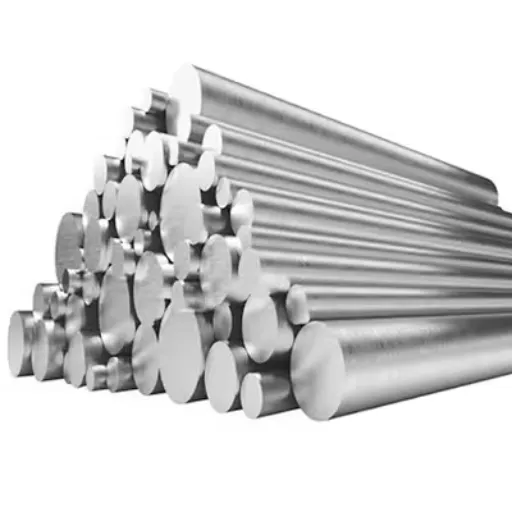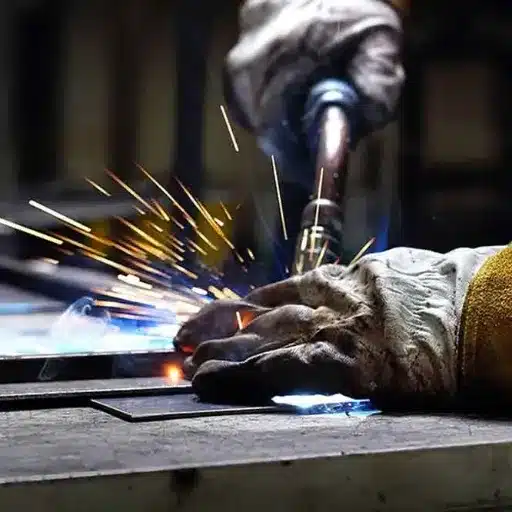Titanium and stainless steel are materials that most people consider when deciding the type of metal that will fit their needs. Though both materials have significant advantages, each is suited to specific applications because of their similarities. If it is for industrial jewelry or if you are simply trying to upgrade your equipment, the pros and cons of each metal do matter. In this guide, we attempt to compare the distinct features, advantages, and disadvantages of titanium and stainless steel so that you can align your priorities in an educated manner. Continue reading to find which metal works best for you.
What are the Color Differences Between Titanium and Stainless Steel?
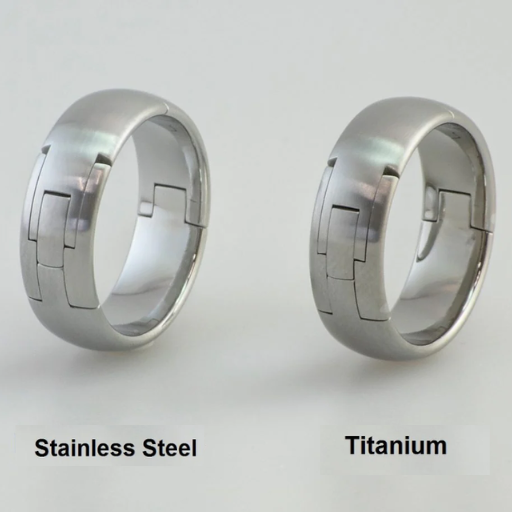
To begin with, titanium and stainless steel differ in terms of color. The appearance of titanium is generally darker than that of stainless steel, which resembles polished silver. Unlike polished stainless steel, titanium has a matte finish, which softens its look. Thus, it can be considered for modern attire. However, the formidable sheen of stainless steel gives it a timeless touch that continues to remain in style.
Properties of Titanium Color
The alloy’s oxide layer, which enhances its endurance, gives titanium a unique coloration and is responsible for its distinct hue ranging from blue to gold. By default, titanium appears soft gray, but purple and green can be added to its dye-free palette with heat and anodization. This attribute is critical to the aerospace, jewelry, and architectural industries, which consider aesthetic customization and resiliency equally important.
As studies indicate, titanium has a refractive index of 2.49 for its oxide layer, which not only permits light to fall on its surface, but also interactively produces interference colors. For example, the thickness of the oxide layer, ranging from 16nm to 110nm, in increments of nanometers, gives rise to many colors. Pale blue or yellow is associated with thinner layers, while deeper shades of blue and purple are prevalent in thicker layers. This easily adaptable range of hues highlights the functionality and aesthetic value of titanium, as it sets apart from other metals.
Such optical qualities make titanium more environmentally friendly, as no harmful chemicals are used to create the colors, ensuring the design and manufacturing requirements of eco-friendly products are met.
Understanding Stainless Steel Color Variations
Unlike other materials, stainless steel has a multitude of color options available due to surface treatment and coating processes. These coatings beautify the materials and enhance the finish’s practicality by making them more durable and resistant to corrosion. The colors are usually produced using specific methods, such as PVD (Physical Vapor Deposition), electrochemical procedures, or oxide layer growth.
Here is a list of five popular color variations of stainless steel.
- Silver (Natural Finish)—A typical polish of stainless steel, this highly reflective, corrosion-resistant silver is used for appliances and architectural features.
- Gold – A luxurious and elegant polish in high demand in jewelry, watches, and upscale interior designs.
- Black Stainless Steel – A sleek, modern variation of stainless steel accessible in home appliances and electronics. Black stainless steel is made through a PVD coating that gives it a sophisticated look.
- Bronze – Warm, earthy tone bronze can add distinct style to furniture, fixtures, and ornaments. Bronze is made through anodizing or PVD.
- Blue—Due to its stunning appeal, Blue is mostly used in artistic applications and decorative panels. This color is produced through electrochemical procedures.
The versatility of steel gives these industries exceptional ornamental and practical possibilities and makes it popular across multiple industries.
How Color Affects Titanium vs Stainless Steel Selection
| Key Point | Titanium | Stainless Steel |
|---|---|---|
| Base Color | Smoky, darker grey with brownish hues | Bright, lighter grey with white reflection |
| Polish Finish | Misty, less reflective | Shiny, highly reflective |
| Color Change with Heat | Can discolor to blue, pink, red | Maintains original color under heat |
| Oxide Film | Thin, natural brownish interference | No significant oxide film |
| Design Versatility | Limited due to harder texture | Easier to shape and polish |
| Durability of Color | Resistant to discoloration | Long-lasting but may dull over time |
| Aesthetic Appeal | Modern, sleek, minimalistic | Classic, bright, versatile |
How Does Titanium vs Stainless Steel Perform in Terms of Durability?
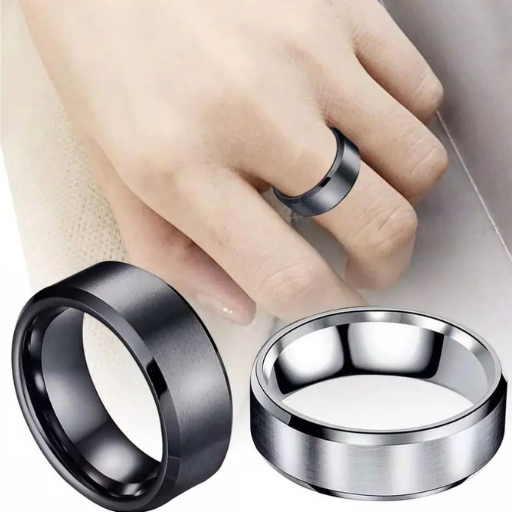
| Key Point | Titanium | Stainless Steel |
|---|---|---|
| Corrosion Resistance | Superior, even in harsh environments | Excellent, but less than titanium |
| Strength-to-Weight Ratio | High, lightweight yet strong | Moderate, heavier than titanium |
| Scratch Resistance | Moderate, prone to visible scratches | High, resists scratches better |
| Fatigue Resistance | Excellent, withstands repeated stress | Good, but varies by grade |
| Impact Resistance | Moderate, can be brittle under stress | High, absorbs impacts well |
| Wear Resistance | Good, but softer than hardened steel | Excellent, especially in hardened grades |
| Longevity | Longer in extreme conditions | Long-lasting in standard environments |
Evaluating the Durability of Titanium
Titanium is considered one of the most durable materials on Earth. It’s sought after in all industries, from aerospace to medical equipment. Unlike other materials, titanium’s strength-to-weight ratio is remarkable. Recent studies have shown that titanium alloys are comparable to steel in strength, but they are 45% lighter, making them perfect for many applications.
Titanium’s durability also includes impressive corrosion resistance. When exposed to oxygen, this metal automatically develops protective layers that safeguard against rust and deterioration during harsh conditions such as saltwater. This is why titanium is used for marine equipment; it can withstand prolonged exposure to seawater without corroding.
Besides that, titanium has incredible fatigue resistance. It can withstand repeated stress cycles without significant wear over time, which is important for many aircraft structures or joint implants, where long-term performance matters the most.
Recent research shows that titanium materials can withstand extremely high temperatures, maintaining their structural integrity even when subjected to a heat of 600°F (316°C). With that said, titanium is not completely impervious. While titanium offers excellent resistance to wear, it is much softer than stainless steel and will scratch much more readily. They can withstand extremely high temperatures, maintaining their structural integrity even when subjected to a heat of 600°F (316°C). That said, titanium is not entirely impervious. While titanium offers excellent resistance to wear, it is much softer than stainless steel and addresses this problem.
Because of its impressive strength-to-weight ratio, titanium is remarkably durable and can easily withstand demanding applications. Coupled with its high corrosion resistance, it emerges as a superior material. Its expense is justified by titanium’s unrivaled reliability and long lifespan.
Evaluating Stainless Steel Durability
Stainless steel is one of the most robust types available in the market and is well-known for being incredibly durable under many circumstances. It is highly resistant to corrosion, rust, and stains, making it ideal for construction and medical facilities. One important contributing factor to the durability of stainless steel is its high chromium content, approximately 10.5% or more. This level of chromium allows passive oxide to form on the steel surface, protecting it from oxidative damage.
As per the latest data, 304 and 316 stainless steel are considered the most durable among all the variants due to their unique composition. Type 304 is made up of 18% chromium and 8% nickel. This balance makes type 304 highly resistant to rust and oxidation under moderate conditions. On the other hand, type 316 has 2-3% molybdenum added, which increases its effectiveness towards chlorides and harsh environments such as coastal and industrial regions. These characteristics make stainless steel valuable for various applications, even in extreme temperatures and chemicals.
Research indicates that stainless steel parts found in bridges or wastewater treatment facilities have a lifespan of 50–100 years with little upkeep. Moreover, the tensile strength of stainless steel, between 515 and 827 MPa (megapascals), demonstrates considerable resistance to deformation from stress. This durability is a significant factor in why stainless steel is reliable for strenuous constructions such as skyscrapers and surgical instruments.
Although aluminum is lighter, stainless steel is more resilient in strength and corrosion resistance, despite its increased weight disadvantage. This metal is also environmentally friendly due to its recyclability, with approximately 60% of the stainless steel used today sourced from recycled materials. Combining stainless steel’s practicality, durability, and sustainability contributes to its continuous use throughout modern industries.
Durability Tests for Titanium and Stainless Steel
| Test Type | Titanium | Stainless Steel |
|---|---|---|
| Tensile Strength Test | Measures high strength-to-weight ratio | Measures moderate to high strength |
| Corrosion Resistance Test | Excellent in harsh environments | Good, varies by grade |
| Fatigue Resistance Test | Superior under cyclic stress | Good, depends on alloy |
| Hardness Test | Moderate to high, varies by alloy | High, especially in hardened grades |
| Impact Resistance Test | Moderate, can be brittle | High, absorbs impacts well |
| Wear Resistance Test | Good, softer than hardened steel | Excellent, especially in tool steels |
| Heat Resistance Test | Performs well at high temperatures | Good, but less than titanium |
Are Titanium and Stainless Steel Resistant to Corrosion?
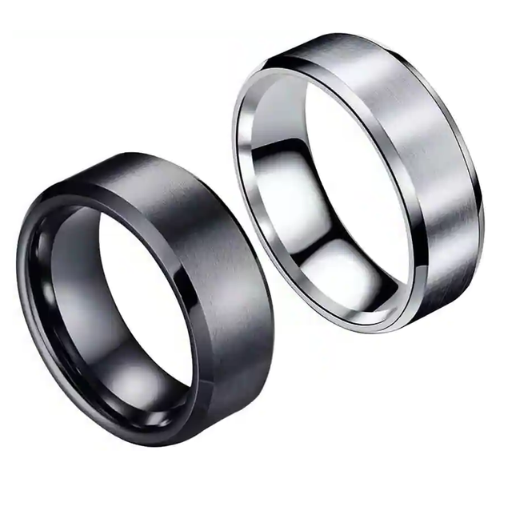
Both titanium and stainless steel have valuable merit in alloy corrosion resistance and thus find application in other more demanding environments. However, their corrosion resistance depends on the specific grade of alloy used and the conditions of the environment in which they are placed.
Titanium Corrosion Resistance
A corrosion-resistant passive oxide layer forms on titanium, making this metal immune to corrosive reactions. This layer prevents corrosion from oxidation, moisture, and other harmful chemicals like water. Some statistics encapsulating issues of titanium are as follows:
- Even in saltwater, pure titanium exhibits immunity to corrosion, thus giving it enhanced merit in marine applications.
- When working with chemical processes, it preserves its corrosion-resistant superiority in moderately oxidizing and mildly reducing environments.
- It’s corrosion resistance in seawater is unrivaled at less than 0.013 mils per year.
In addition to being immune to chlorides, titanium’s ability to endure extreme temperatures renders it useful in aerospace medicine, medical implants, and desalination plants.
Stainless Steel Corrosion Resistance
Like other metals, stainless steel heavily relies on chromium for passive corrosion. Its corrosion resistance depends on the alloy composition:
- 304 and 316 ignore basic corrosion, but 316 has additional molybdenum for chloride pitting.
- Pitting resistance is one downside of stainless steel. However, in places with 3 to 10 ph, it can be used for chemical, construction, food processing, and chemical transport.
- Research states 316 will resist pitting at 1100mg/L chloride concentration while 304 has 400mg/L.
Localized corrosion, such as pitting and crevice corrosion, is a type of stainless steel corrosion that arises due to intense temperature and chloride concentrations.
Choosing the Right Material
Both titanium and stainless steel have significant corrosion resistance, but the application needs to be considered for either one. Titanium outdoes stainless steel in extreme environments with high temperatures or intense chloride exposure. On the other hand, stainless steel is far more economical than titanium and is abundant in moderately corrosive situations.
The alloys of these materials are continually changing, improving the alloys designed to increase corrosion resilience and ensuring their use in critical applications in different industries.
Corrosion Resistance in Stainless Steel
In my opinion, the resistance to corrosion in stainless steel depends on the specific grade used and the context in which it is used. As noted earlier, other factors impact resilience, too. Chromium, part of stainless steel, provides rust, corrosion, passive protective rust, base layer resilience, and superb rust protection. However, other grades, like molybdenum added to 316 stainless steel, are far more effective in extreme corrosion conditions. For standard 304 stainless steel, uncontrolled grade standard is more economical, practical, and suitable when called for in moderately corrosive situations and, lacking hostile environments. Ultimately, it is about meeting the performance with budget requirements.
Titanium’s Advantage in Corrosion Resistance
| Key Point | Details |
|---|---|
| Oxide Film Formation | Forms a protective, self-healing oxide layer |
| Resistance to Chlorides | Withstands seawater, wet chlorine, organic chlorides |
| Performance in Acids | Resists oxidizing acids like nitric acid |
| Galvanic Corrosion Behavior | Minimal impact when coupled with other metals |
| Durability in High Temperatures | Effective up to 230°F in seawater environments |
| Resistance to Pitting | Superior in environments causing pitting corrosion |
| Passivation Ability | Regenerates the oxide layer if damaged |
Is Stainless Steel vs Titanium More Cost-Effective?
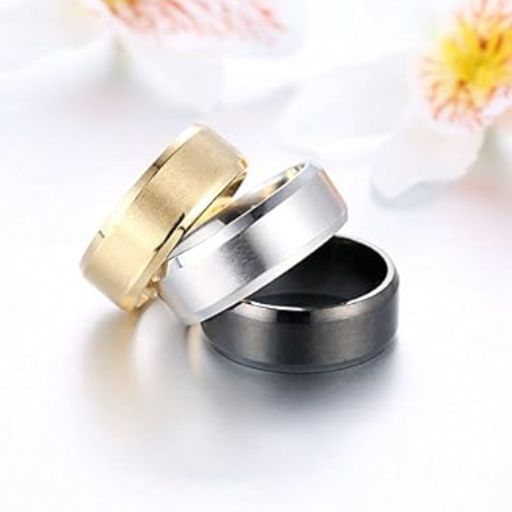
Stainless steel vs. titanium is a cost issue, mainly depending on the use, operating environment, and specific industry. Purchasing grade stainless steel 304 and 316 materials for a newcomer is much more affordable, costing 2−2−4 per pound. At the same time, due to complex extraction and manufacturing processes, titanium costs a whopping 25−25−30 per pound.
Titanium’s superior strength-to-weight ratio and incredible corrosion resistance pay off in the long run. Due to lower maintenance and replacement costs, individuals find purchasing titanium more economically sensible, as its lifespan surpasses grade stainless steel 304 or 316 in seawater or high chemical exposure conditions. Despite the higher upfront cost, titanium outperforms other materials, leading to lower sustenance costs in aerospace, marine, and medical sectors.
Regarding less critical applications and moderately corrosive environments, grade stainless steel 304 is handy and much more budget-friendly. Where construction occurs, stainless steel provides a good balance of performance and price. On the contrary, medical implants and advanced aviation components require high precision. In these scenarios, investing in titanium enables users to pay a higher price but gain unmatched value, which justifies the decision.
Therefore, the decision regarding using these two materials usually comes down to balancing the initial expense of stainless steel with the long-term worth of titanium’s extraordinary ability to withstand severe conditions.
Cost Analysis of Titanium
| Key Point | Details |
|---|---|
| Commercially Pure Titanium | $6–$9 per pound, used in chemical processing |
| Titanium 6-4 Alloy | $10–$15 per pound, aerospace and medical uses |
| Titanium Scrap | $2–$4 per pound, cost-effective for recycling |
| Titanium Sheets | $15–$30 per pound, for aerospace and automotive |
| Production Costs | High due to energy-intensive extraction process |
| Recycling Impact | Reduces costs, supports sustainability |
| Market Demand | Driven by aerospace, medical, and automotive |
| Geopolitical Factors | Tariffs and supply chain disruptions affect cost |
| Technological Advancements | Innovations lower production costs over time |
Analyzing the Cost of Stainless Steel
| Key Point | Details |
|---|---|
| Raw Material Costs | Nickel, chrome, and molybdenum prices fluctuate significantly. |
| Energy Costs | Energy-intensive production increases overall costs. |
| Supply and Demand | Tight supply or high demand raises prices. |
| Macroeconomic Impact | Inflation and exchange rates affect pricing. |
| Technological Advancements | Reduce production costs, lower stainless prices. |
| Government Policies | Tariffs and environmental regulations influence costs. |
| Production Costs | Precision machining and quality control add expenses. |
| Recycling Trends | Higher recycling reduces material costs. |
| Global Market Trends | Automotive and construction boost stainless demand. |
| Geopolitical Factors | Trade restrictions impact material prices. |
Which is Better for Jewelry: Titanium or Stainless Steel?
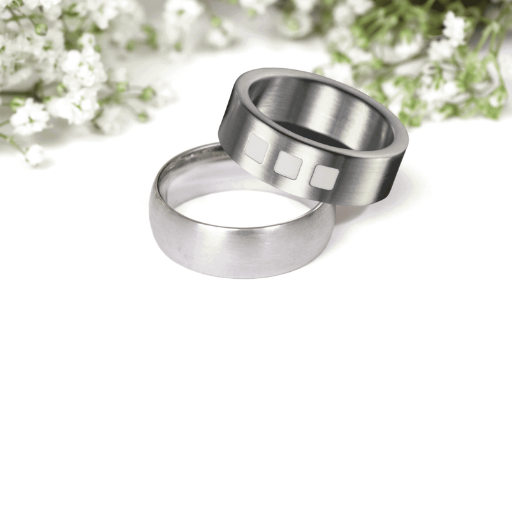
Evaluating the performance, aesthetics, and practicality of jewelry makes decision-making more difficult when choosing the better option between titanium and stainless steel. Consider the following factors for making a more informed decision:
- Durability
Titanium: Jewelry made from titanium is long-lasting and ideal for demanding conditions because it is renowned for its exceptional strength and scratch resistance.
Stainless Steel: Stainless steel is a durable metal option, but it has less longevity than titanium due to being more scratch-prone with prolonged use. Overall, it holds good value as a piece of everyday jewelry.
- Weight
Titanium: Large jewelry pieces like bracelets or watches are comfortable to wear as they can be made of titanium, which is very lightweight.
Stainless Steel: Some prefer jewelry made of stainless steel because it is sturdier and outweighs titanium.
- Hypoallergenic properties
Titanium: Completely hypoallergenic, making it suitable for sensitive individuals.
Stainless Steel: Stainless steel may contain skin-irritating amounts of nickel, making some allergic individuals prone to irritation.
- Appearance and finish
Titanium offers a variety of colors from anodization with options of matte or polished finishes, which adds to its appeal.
Stainless Steel offers a shiny, mirror-like appearance but does not offer the variety of colors offered by titanium.
- Cost
Titanium: Usually more costly because of its properties and the difficulty of processing it. Although expensive, this material’s durability can make it a worthy investment.
Stainless Steel: Less expensive and more widely stocked, making it a preferred option for cost-conscious shoppers.
Both have different advantages, and the selection is based on individual taste, finances, and practical requirements. Titanium is the best choice for those seeking lightweight comfort and allergy-friendly materials. Alternatively, stainless steel is more affordable and comes in many styles.
Benefits of Choosing Titanium Jewelry
- Lightweight and Comfortable: Titanium is perfect for everyday wear due to its exceptional lightness. Wearing bespoke titanium jewelry feels unnoticeable and ensures comfort, even with prolonged use.
- Hypoallergenic Properties: Titanium’s exceptional biocompatibility and hypoallergenic nature make this metal ideal for persons with sensitive skin or metal allergies. It is not a likely irritant, making it a safe option for all.
- Exceptional Durability: Titanium is extraordinarily durable, renowned for its strength and resiliency. It defends against scratches, bending, and breaking, meaning your jewelry will maintain its appearance and structural integrity over time.
- Corrosion and Tarnish Resistance: Unlike some other metals, titanium naturally repels corrosion, rust, and tarnish. That means titanium jewelry is low-maintenance and can endure exposure to various elements, including moisture and chemicals.
- Versatile Aesthetic Appeal: Titanium jewelry has various designs and finishes, from sleek matte surfaces to polished, glossy looks. Furthermore, anodization allows for creating colorful jewelry, providing ample fashionable options for everyone.
Advantages of Stainless Steel Jewelry
Stainless steel jewelry is my favorite because of its durability. It does not scratch easily, making it ideal for everyday use. Its hypoallergenic properties also make it suitable for sensitive skin, like mine. I appreciate stainless steel jewelry because it is cheaper than other metals but does not lack style or quality. On top of that, because stainless steel does not tarnish or corrode easily, it is low maintenance while still looking polished and sophisticated.
Comparing Aesthetics: Titanium and Stainless Steel Jewelry
| Key Point | Titanium | Stainless Steel |
|---|---|---|
| Base Color | Cool-toned gray, modern | Bright silver, classic |
| Finish Options | Matte, polished, and anodized colors | Polished, brushed, textured |
| Customization | Anodized for vibrant colors | Limited to plating or finishes |
| Weight | Lightweight, comfortable | Heavier, noticeable |
| Design Versatility | Minimalist, bold, artistic | Classic, elegant, versatile |
| Scratch Resistance | High, durable | Moderate, shows wear over time |
| Hypoallergenic | Yes, nickel-free | May contain nickel, potential irritant |
| Maintenance | Low, resists tarnish | Moderate, requires occasional polishing |
References
- VACUUM ARC DEPOSITED DECORATIVE AND PROTECTIVE TiN AND TiO2 COATINGS ON STAINLESS STEEL – Discusses titanium nitride coatings and their natural golden color on stainless steel substrates.
- Characterization of Titanium and Stainless Steel Medical Implants Surfaces – Explores the surface characteristics of titanium and stainless steel, including oxide layers and color differences.
- GENERAL INSTRUCTIONS FOR COMPLETING SF 298 – Includes insights into the differences between stainless steel and nickel-titanium in specific applications.
Frequently Asked Questions (FAQ)
Q: What are the main differences between titanium and stainless steel?
A: Titanium and stainless steel are widely used metals, but have some key differences. Titanium is a pure metal known for its high strength-to-weight ratio and corrosion resistance, making it lighter and stronger than stainless steel. Stainless steel is an alloy made primarily of iron, chromium, and often nickel, known for its durability and resistance to rust. Titanium is frequently used in aerospace and medical applications, while stainless steel is also popular in construction and kitchenware.
Q: How do titanium alloys compare to stainless steel in terms of strength?
A: Titanium alloys, such as grade 5 titanium, are generally stronger than stainless steel, including 316L stainless steel. Titanium’s high strength and lightweight properties are ideal for applications requiring strength and reduced weight. Stainless steel, while strong, is typically heavier, which can be a disadvantage in specific applications where weight is critical.
Q: Is titanium better than stainless steel for scratch resistance?
A: Titanium is generally more scratch-resistant than stainless steel due to its higher hardness and durability. However, both materials can show wear over time, and specific coatings or treatments can enhance their scratch resistance.
Q: Can titanium rust like stainless steel?
A: Titanium does not rust because it forms a protective oxide layer that resists corrosion. Stainless steel is also rust-resistant, but it can still corrode under certain conditions, especially if it is not a high-grade alloy like 316 or 316L stainless steel.
Q: What are the advantages of titanium over stainless steel in watches?
A: Titanium watches are often favored for their lightweight and hypoallergenic properties, making them comfortable to wear for extended periods. They are also highly resistant to corrosion and scratches. Stainless steel watches, while more affordable, are heavier and may not be as resistant to scratches as titanium.
Q: What grades of titanium are most commonly used?
A: The most commonly used grades of titanium are grade 2 and grade 5. Grade 2 titanium is often used for its excellent corrosion resistance and formability. In contrast, grade 5 titanium, also known as Ti-6Al-4V, is known for its high strength and toughness, making it suitable for aerospace and high-performance applications.
Q: How do the grades of stainless steel compare?
A: Stainless steel comes in various grades, with 304 and 316 being the most common. 316 stainless steel, including 316L stainless steel, offers better corrosion resistance than 304, making it suitable for marine environments. Austenitic stainless steels, like 304 and 316, are known for their excellent corrosion resistance and formability, while ferritic stainless steels are typically less corrosion-resistant but offer better heat resistance.
Q: Is titanium stronger than stainless steel in terms of impact resistance?
A: Titanium is robust and generally more impact-resistant than stainless steel. Its ability to withstand extreme conditions without deforming makes it highly suitable for demanding applications. However, stainless steel’s toughness and ductility make it a reliable choice for applications that combine strength and flexibility.
Q: Which metal is more cost-effective, titanium or stainless steel?
A: Stainless steel is generally more cost-effective than titanium due to its lower material cost and easier manufacturing processes. While more expensive, titanium offers unique advantages like high strength, lightweight, and outstanding corrosion resistance, which might justify its cost in specific applications where those properties are critical.



